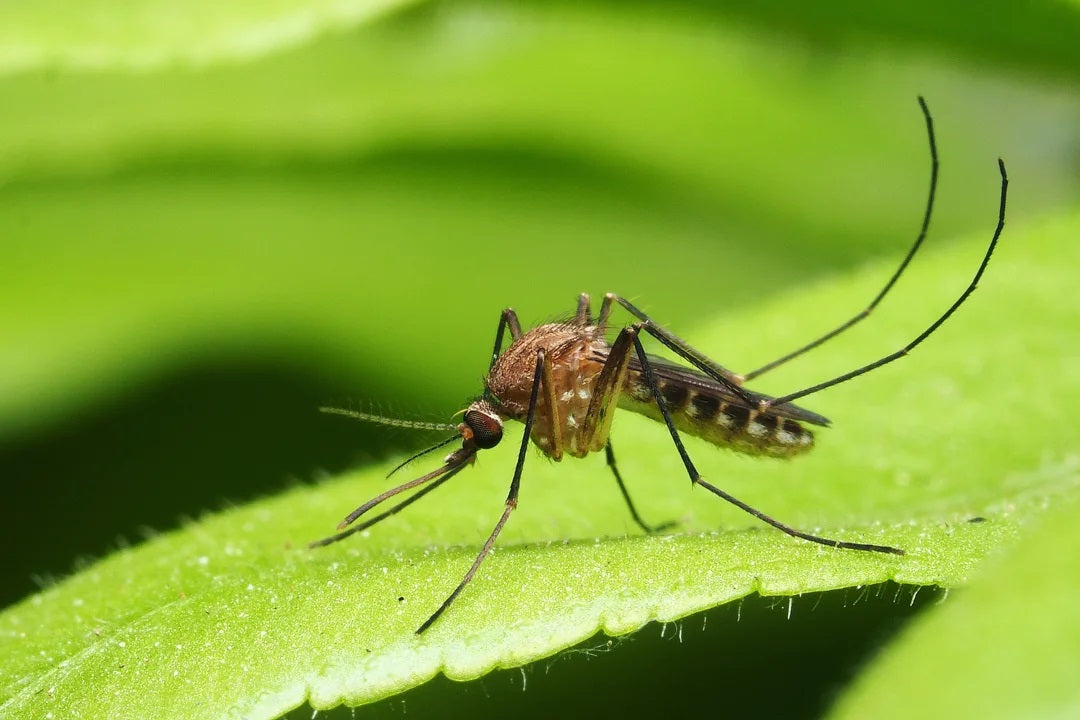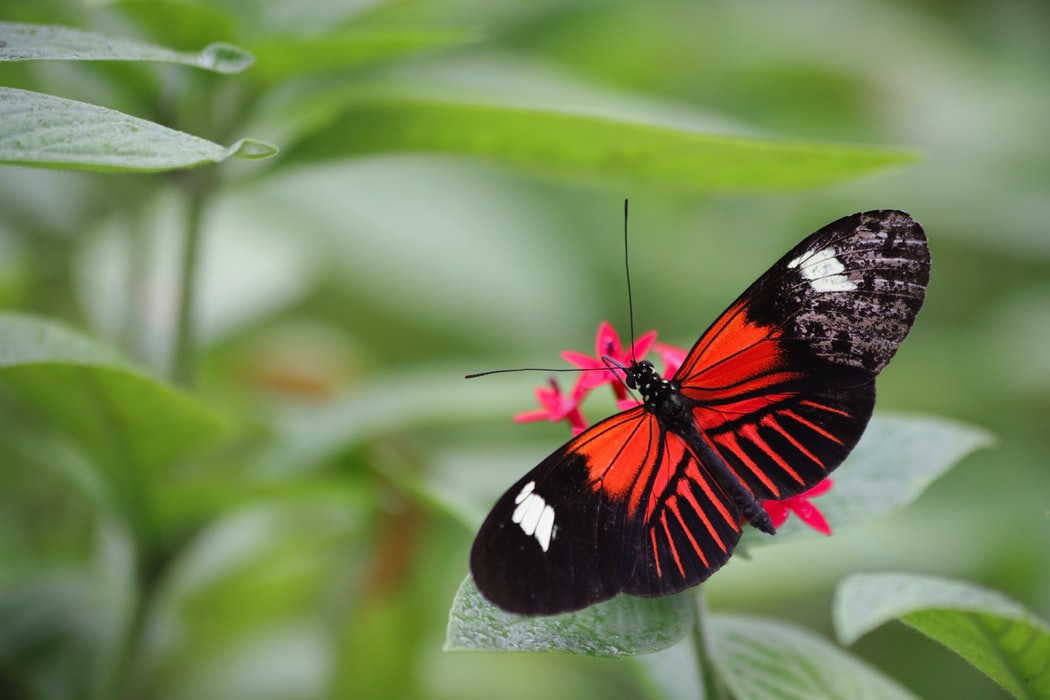It’s all fun and games at the family BBQ until you feel that first itchy bite starting to swell up on your ankle. Before you can process what’s going on, you’re under attack!
The easiest way to avoid mosquito bites is to cover up, but in the sweltering heat of summer, most of us reach for the bug repellent. But what if you don’t want to use DEET and prefer a more natural approach, or don’t want the mess of spraying and frequent reapplying to your skin or clothes? We have just the solution: mosquito repellent bracelets! They’re convenient, free of synthetic chemicals and easy to remember to wear. And if you’re a DIY enthusiast, you can try your hand at making them yourself. We’ll show you how.

DIY Mosquito Repellent Bracelets
For this DIY bracelet, the material, shape, pattern and color are entirely up to you. Get creative! If you’re not sure where to start, we recommend paracord, faux leather or suede, or a cotton bandana or other absorbent cloth material. The most important consideration is to be sure that whatever material your bracelet is made of, it will be able to absorb and retain the essential oil mixture that you’ll be creating. For this reason, real leather may not be the best choice. However, even more important than the bracelet itself is the essential oil mixture.

What Essential Oils Repel Mosquitoes?
Before we begin dropping a smorgasbord of oils into a spray bottle, let’s talk about which plant oils will give you the best chance of keeping mosquitoes away. In 2001, researchers performed a study that showed oil of catnip was ten times more potent than DEET at repelling mosquitoes1. And the EPA has found that two other common active ingredients in registered insect-repelling products, citronella and oil of lemon eucalyptus, provide mosquito-repelling protection from ten minutes to two hours respectively2. The EPA has also compiled a list of essential oil ingredients in unregistered products that were recognized as safe based on the concentrations found in those products. They include peppermint oil, geranium and cedar oil. (The EPA notes it has not tested these for efficacy.)3
When choosing essential oils for skin application, purchase only pure oils, not fragrance oils, and read labels to ensure that only the plant name appears, without fillers or additives. Look for dark or amber-colored bottles, and purchase from a reputable retailer.4
Once you’ve got your bracelet, a small dropper or mister bottle to mix your oils (more on that below) and an assortment of 3–4 of the above essential oils, there’s just one more thing you’ll need to begin crafting your very own bug repellent bracelet.
The Importance of Carrier Oils
Essential oils, on their own, are powerfully concentrated plant extracts. They should not be applied undiluted to the skin, as they can cause irritation and rashes. This is especially true if the exposure is for extended amounts of time (like when sitting by a fire for a few hours roasting marshmallows). So it’s important to make sure that when creating your own DIY mosquito repellent bracelet, your main ingredient is a carrier oil. Fortunately, many common carrier oils, like olive or coconut, can be found in the pantry5. Some other options are grapeseed and sweet almond.
When deciding how much carrier oil to mix with your essential oils, we suggest following the safety recommendations of the Tisserand Institute:
- .5% dilution: 4 drops essential oil per 1 ounce carrier oil
- 1% dilution: 9 drops essential oil per 1 ounce carrier oil
- 2% dilution: 18 drops essential oil per 1 ounce carrier oil
- 3% dilution: 27 drops essential oil per 1 ounce carrier oil
- 5% dilution: 45 drops essential oil per 1 ounce carrier oil6

For children or those with sensitive skin, it’s recommended that you use a 0.25–1% dilution, or just 2–9 drops of essential oil per every ounce of carrier oil7. You may need to mix more than one concentration of the solution depending on the ages of your bracelet wearers. These dilution amounts correspond to the total amount for all essential oils in your blend, not a percentage for each essential oil. So, for example, if your blend included peppermint, cedar, geranium, lemon eucalyptus, citronella and catmint and you were using a 2% dilution, you would use three drops of each oil for every ounce of your carrier oil. And while you’re not applying these oils directly to the skin, it’s always a good idea to conduct a patch test to check for allergic reactions.
The dilution level you choose may depend on the type of essential oil you’re using. Read all labels carefully and do further research if you’re unsure. People who are pregnant or who have asthma or certain skin conditions should check with their doctor before using any essential oils. You may need to experiment to determine which dilution is most effective for your particular blend. And remember, you can always start out with a smaller percentage of essential oils and increase it later.
Ready to get mixing? Measure your carrier oil of choice into either a dropper bottle or mister bottle. Calculate the amount of drops you’ll use for your essential oil blend and carefully add each oil to the bottle with carrier oil. Close it up and shake gently to distribute the oils evenly.
Making Your Mosquito Repellent Bracelet
After you’ve assembled (or purchased) your bracelet and successfully mixed your essential oils into your carrier oil, the last step is to put them all together!
Depending on which type of bottle you used to mix your oils (spray vs. glass dropper) your application method will be a little different. In either case, it’s important to saturate each of the individual bracelets with your mosquito repellent solution. Once all the bracelets have been given a thorough soaking with the mixture, leave them in a well-ventilated area to dry out a bit so that the oil can penetrate the bracelet. Once that’s done, there’s nothing more to it but to put them to the test!
Pro Tip: If you know you’re going to be outdoors for an extended period of time, it’s a good idea to pack your essential oil mixture so you can reapply it to your bracelets every few hours if you feel that they need some extra oomph!
Best Bee Brothers Mosquito Repellent Bracelets
DIY is just one of those things that’s hit or miss: either you love it, or you steer far, far away from it. If you belong to the latter category (we understand, you’ve got enough on your plate) we’ve still got you covered.

At Best Bee Brothers, our powerful, DEET-free mosquito repellent bracelets utilize all the natural potency of the best mosquito-repelling essential oils in a ready-to-use capsule form. Our blend contains lemongrass oil, lavender oil, eucalyptus oil, peppermint oil, silvery wormwood oil and chamomile oil. Each replaceable capsule provides over 700 hours of mosquito repellent protection so you never have to worry about running out.
Whether you decide to go it on your own or put your trust in us, our team will be here wishing you a pest-free helping of summertime bliss!
- 1. American Chemical Society, "Catnip Repels Mosquitoes More Effectively Than DEET," ScienceDaily, August 28, 2001, www.sciencedaily.com/releases/2001/08/010828075659.htm.
- 2. Mi Young Lee, “Essential Oils as Repellents against Arthropods,” BioMed Research International (October 2018), doi.org/10.1155/2018/6860271.
- 3. EPA, “Regulation of Skin-Applied Repellents,” accessed January 11, 2022, https://www.epa.gov/insect-repellents/regulation-skin-applied-repellents.
- 4. John Hopkins Medicine, “Aromatherapy: Do Essential Oils Really Work?,” accessed January 11, 2022, https://www.hopkinsmedicine.org/health/wellness-and-prevention/aromatherapy-do-essential-oils-really-work.
- 5. Johns Hopkins Medicine, “Aromatherapy.”
- 6. Tisserand Institute, “Safety Guidelines,” accessed February 2, 2022, https://tisserandinstitute.org/safety-guidelines/.
- 7. Tisserand Institute, “Essential Oil Dilution Chart,” accessed February 2, 2022, https://tisserandinstitute.org/essential-oil-dilution-chart/.









Leave a comment
All comments are moderated before being published.
This site is protected by hCaptcha and the hCaptcha Privacy Policy and Terms of Service apply.